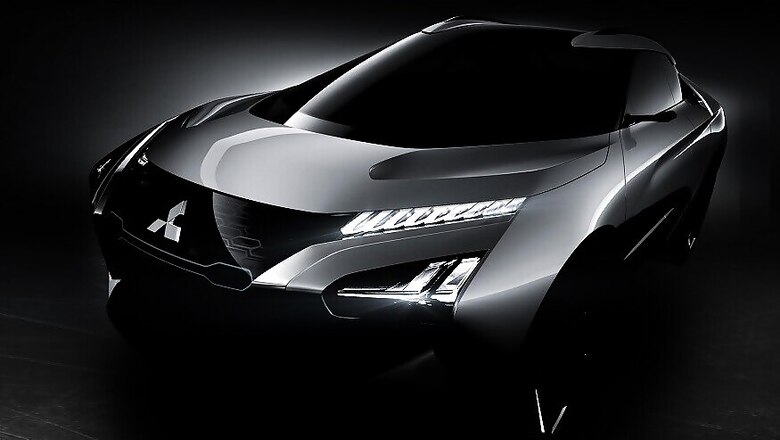
views
At this year's Tokyo Motor Show Mitsubishi will be taking the wraps off something called the e-Evolution Concept, and it promises to pick up where the company's legendary but now defunct EVO models left off.
The original Mitsubishi EVO range was based on the otherwise sensible Lancer family car and was inspired and informed by the company's World Rally cars and used a host of phenomenal electronic aids to enable even the most inexperienced driver to negotiate a complex of corners and bends without lifting their foot off the accelerator and without throwing the back end out so much that the car ended up spinning in circles.
The cars gained such a cult following, particularly in the Japanese tuner community that when the final 10th-generation Mitsubishi Evo rolled off the production line in September 2016 and was auctioned off for charity, bidding surpassed $76,400.
The new EVO, which the company has dubbed the e-Evolution Concept for its Tokyo motor show debut, takes everything about the original range and catapults it forward into the next decade in terms of technology.
The biggest single change is that rather than a 2-liter heavily turbocharged engine that meets current World Rally Championship criteria under the hood calling the shots, this car is a plug-in electric vehicle.
However, it's one with three motors -- one driving the front axe and one driving each of the rear wheels. This not only allows for perfect torque vectoring -- i.e., sending exactly the right amount of power to exactly the right wheel at exactly the right moment, it also ensures that even at the limits the car stays flat and roll-free in the bends. The rear motors work proactively to eliminate yaw -- i.e., the body roll that's common in any car when it's being pushed quickly in one direction and then the other.
However, that's just the start. In concept form, at least, the car is imbued with Artificial Intelligence. But rather than being an AI system designed to learn how to autonomously negotiate certain driving situations, it's a system that learns the driver's capabilities and shortcomings as well as the upcoming road conditions and then combines all of the collected data so that the car can deliver confidence to the driver and occupants.
And the longer it's driven the greater the understanding it has of the owner's driving style. So much so that it can offer coaching sessions and assistance to improve the driver's skill levels. The idea being that at some point in the future, all of the active stability systems can drop into the background as the driver's skill levels mitigate their need.
The 45th Tokyo Motor Show opens its doors to the press on October 25 and to the public on October 27.
Also Watch: Audi A5 and S5 Sportback | First Drive Review | Cars18




















Comments
0 comment